Preview: Close Combat The Bloody First… Bloody Amazing
When PC gaming first became available, I like many of you, played the many games of the Close Combat series. is now releasing the seventeenth title in the series, Close Combat: The Bloody First which takes the classic series to a new level and uses a completely new game engine to make this new edition an instant classic.
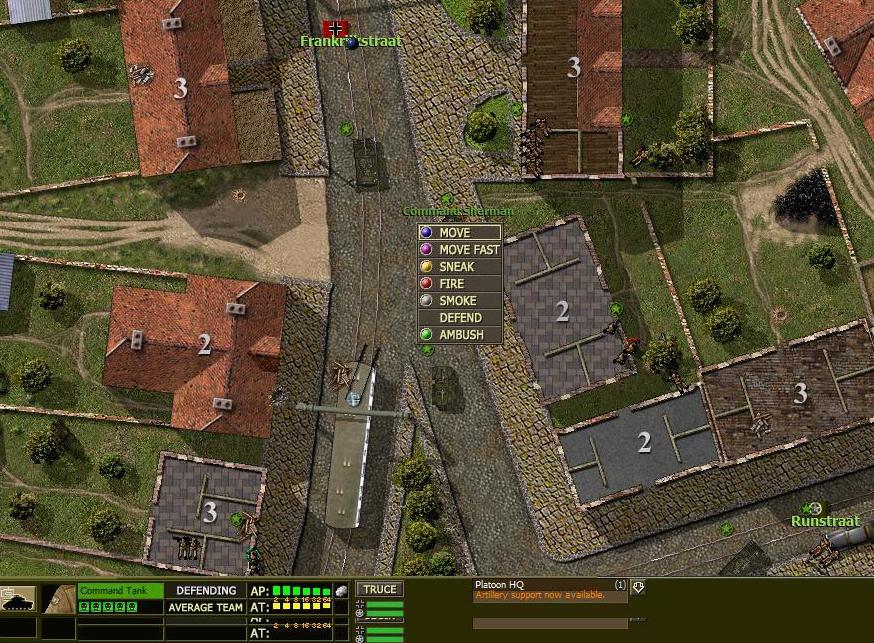
The Old Version of Close Combat
It may be hard to believe that the first edition in the series, called “Close Combat,” came out in 1996 and was followed by annual releases that covered all of the Second World War in Europe. I remember playing Close Combat: A Bridge Too Far and Close Combat: The Russian Front numerous times and enjoyed all of the community mods that expanded the game. The designers of the series took a few years off and changed its setting to the present-day fight in the war against terror. In 2004 Close Combat: Marine was developed for use by the US Marine Corps and I was lucky to get a copy of it.
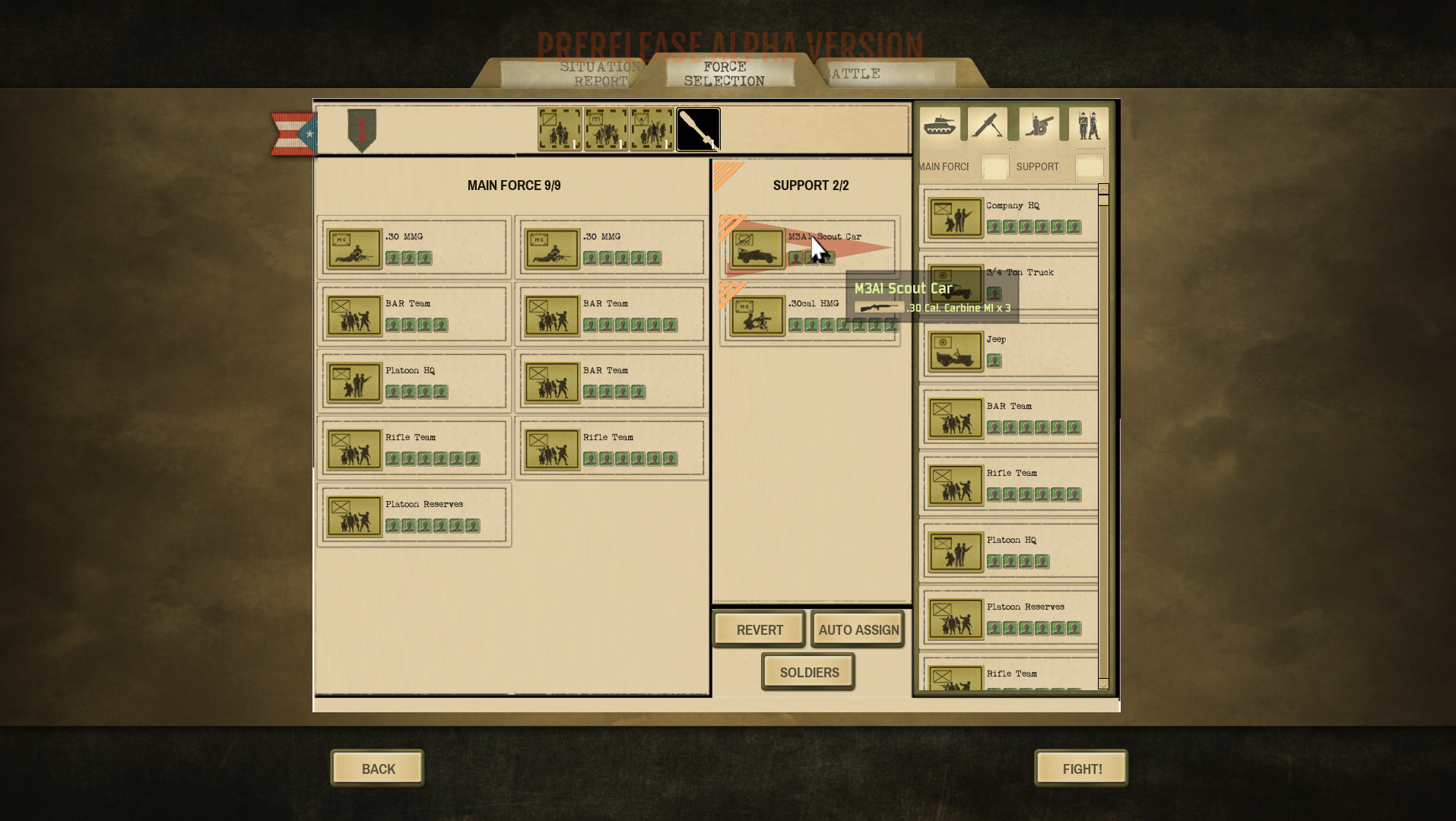
Soon after this, the Road to Baghdad came out which focused on Operation Iraqi Freedom and was the only title not to have the name Close Combat in the title. In 2006 the series was taken over by Matrix games and a bunch of titles were remade and some new editions came out with the last being Close Combat: Gateway to Caen in 2014. These follow on titles stayed true to the top-down 2D look at the battlefield and Bloody First breaks that mold.

Why has this series been so popular and why has the military in a few different nations adopted it as a training tool? Well, it is because the game is that good and that complete.
The Close Combat series focuses on the sharp end of combat where you control little more than a reinforced platoon or a company against a computer-controlled (AI) enemy. Your units are grouped into squads, weapons teams, and vehicles however you can drill down to the individual soldiers in each unit and see their status in great detail. Unlike many other games, Close Combat incorporates factors such as mental state, ammunition status, health, and stamina.
If a unit is stressed and pinned down they probably will not charge into enemy fire. Instead, they may break and run. These mechanics have set this series above a lot of other games who have tried to emulate such a detailed approach. Games such as Men at War or are great games that have tried to give gamers a similar experience but have never reached the iconic status as the Close Combat series.
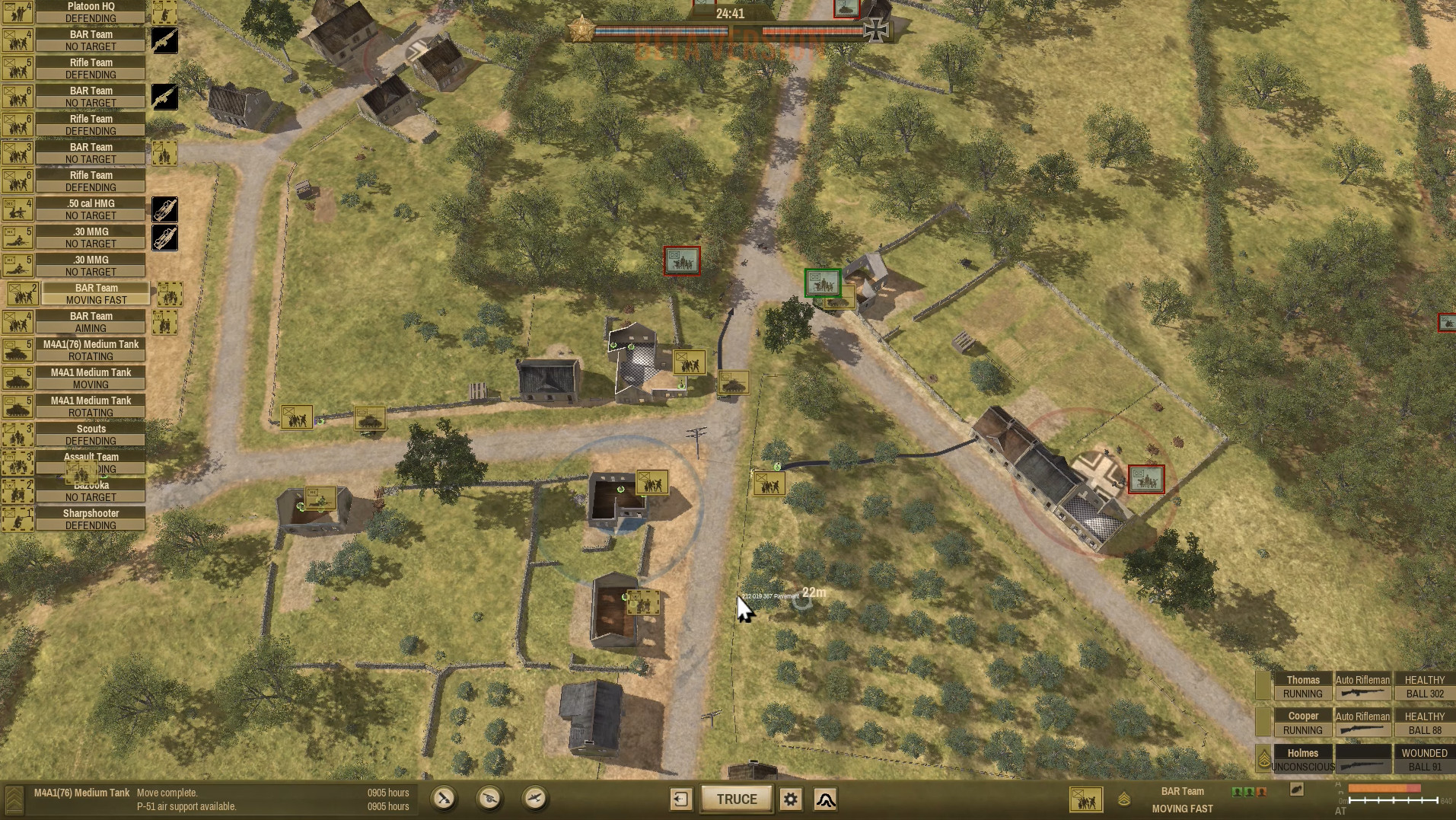
Another appealing design characteristic is how actual tactics count in Close Combat. Units in the game accurately portray the real-world capabilities of the units they represent. Using these tactics properly is the key to victory.
The game tests how well you can use fire and maneuver to achieve each of the mission’s objectives and this is why organizations such as the USMC and the RAF Regiment use the Close Combat engine for training. The learning curve is steep and you will enjoy every bloody loss until you figure out the best tactics to succeed in the game.
The New Version
The Bloody First is a major step up from previous iterations. The previous style of 2D top-down view is gone. Now, 3D with cutting edge graphics that now makes it rival other contemporary games.
In my opinion, the graphics were the main reason why some gamers passed on the previous titles. The new graphics approach and improvements in the physics engine of the software are a major improvement and will help attract a larger audience. The maps look amazing and the movement of the troops looks so lifelike it’s almost scary.
One difference from the old games players will likely notice is how elevation plays more accurately in the 3D model that the 2D version.
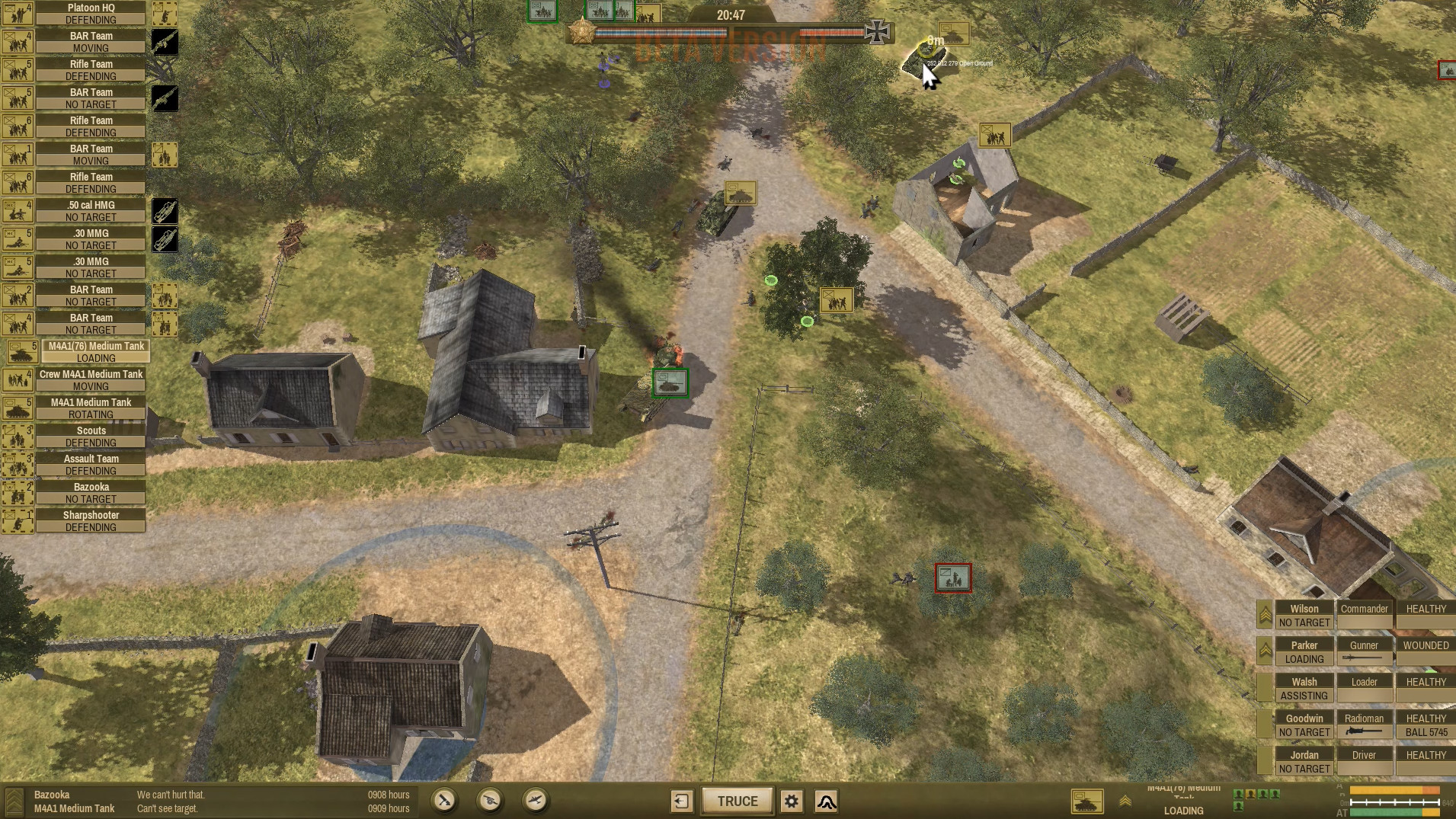 The Bloody First follows the US 1st Infantry Division through three major campaigns in the war, Tunisia, Sicily and Normandy. Each area has its own linked campaign with fourteen missions in Africa and eleven each in Sicily and France.
The Bloody First follows the US 1st Infantry Division through three major campaigns in the war, Tunisia, Sicily and Normandy. Each area has its own linked campaign with fourteen missions in Africa and eleven each in Sicily and France.
Past titles focused on a specific theater or campaign and did not contain as many missions. You can also play all thirty-six missions as one big grand campaign which I plan to do once I have mastered the game a little bit better.
The game also has the OOB and TO&E for the Big Red One from 1942 until 1944 and their opponents. The German, and Italian (first time in the game) forces are also accurately portrayed. With these forces, the game boasts over 50 vehicles and 300+ weapons for you to play with.
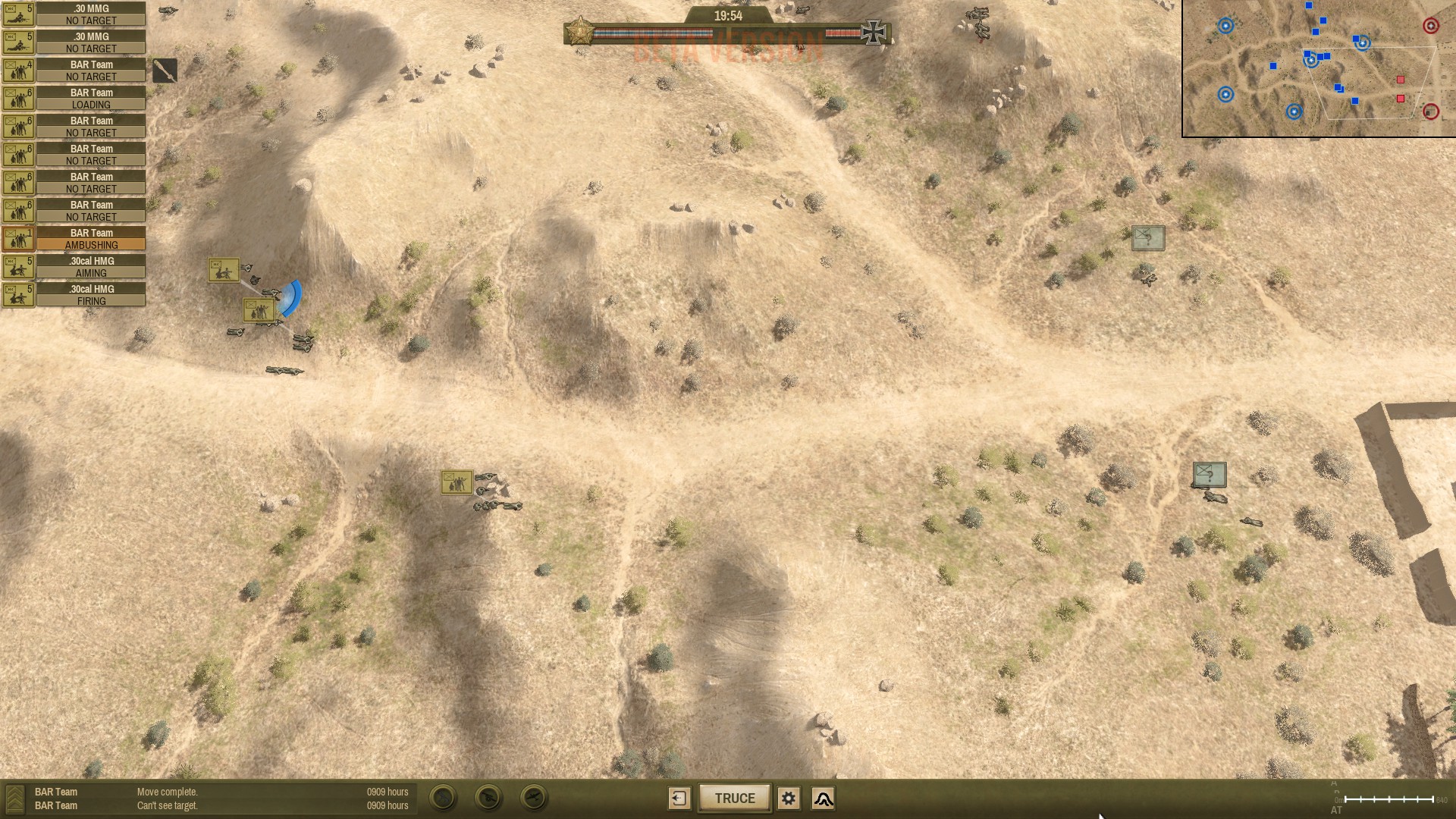
Bloody First will also allow players to create their own scenarios, just like the previous community-generated mods for the old versions. Those old mods from the players helped keep the series around for the past two decades.
Speaking of community you can play this game head to head, cooperatively or against the AI. The new AI behind this game is as excellent as in any of the previous titles

Based on my experience with both a beta version of this game, and the commercial version, I cannot recommend this game enough.
Thought the Close Combat series’ long run, the games always straddled the line between game and simulation. This gave the players both a lot of fun game-play combined with a huge dose of reality (via the simulation).
This kept the game challenging and if it was not for adjusting the level of AI to my benefit I may have gone crazy trying to crack this game. It is this reality that made it attractive to the actual military as a training aid.
The game is a real test of your tactical acumen. Players who believe they are a good tactician with tabletop games like Bolt Action or Flames of War, may learn how good or bad their claims are after a few games of the new Close Combat.
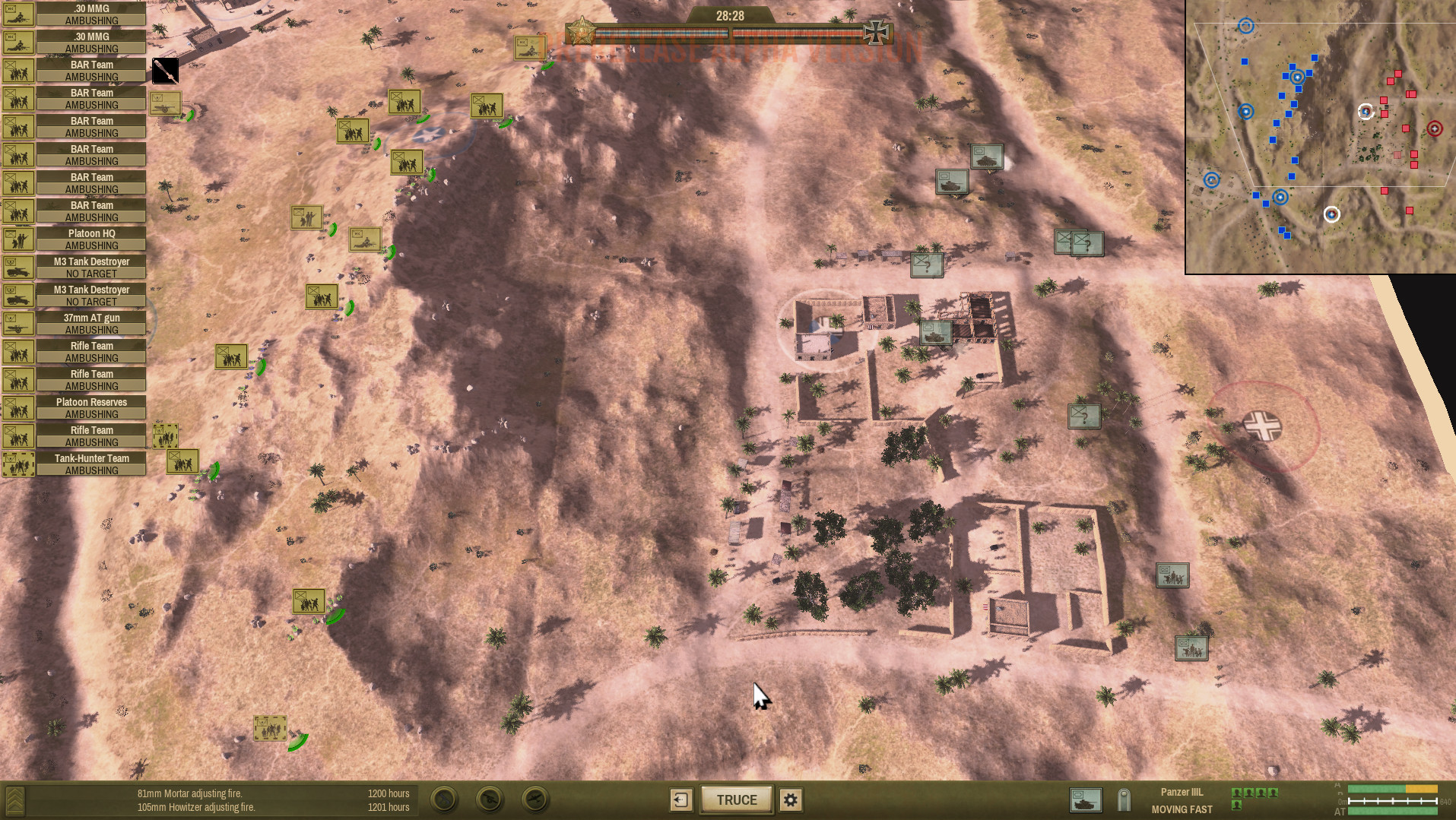
Confusion and terror on the battlefield are accurately portrayed. As soon as your forces get into contact with the enemy the game becomes noisy, with the sound of gunfire and men screaming echoing through your speakers.
Since the game is real-time, everything seems to go bad at once. Each squad and situation demand a player’s full attention to remedy. Players may want to hit Pause to get some situational awareness (SA) of the environment their forces are in. Even by doing this, players may not see everything you will need to pay attention to. For example, if one squad was ambushed is all KIA, a player may not still see what killed them. They’ll need to react as a commander with limited information, just as in real combat scenarios.
What I always loved about the game is that even the sounds make a difference. Where the echo of a shot seems to come from is based on the location of the player’s field of vision. Players will need to use all of the tools available to gain some SA in the confusion of the battle.
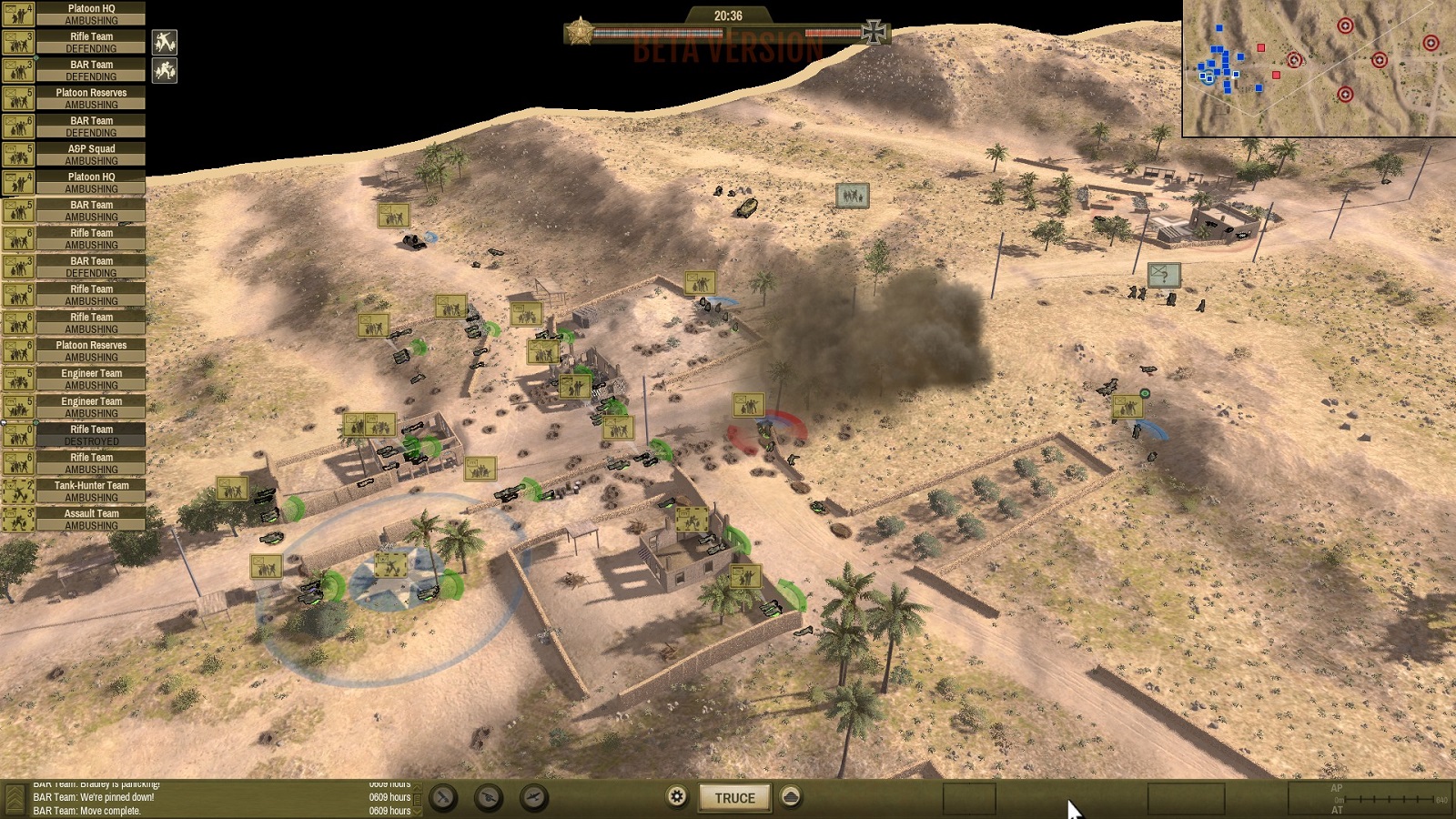
I like the Helmet Fire feel to a certain extent and wonder if cooperative play will make the gameplay differently.
The one minor flaw of the game is that while the men on the battlefield will act like real soldiers in combat, players do not have subordinate leaders such as skilled NCOs that can see how best to execute the battle plan once the shooting starts.
Unlike real combat situations, the player, as the overall commander, may be aware of too much of what is going on, and will not have the ability to delegate tasks to another officer or NCO under their command.

My friend and consummate Squad Leader (ASL) player David Garvin always tells me; “If it works in real life it works in ASL.” This is true for Close Combat as well. Knowing how to effectively use the teams is a crucial aspect of the game. In order to save headaches once the battles begin, players need to consider the best starting location for support such as HMG/ATG/Mortar Teams, and not waste time moving these teams later when they need to be firing downrange.
Also, ammunition counts, I cannot tell you how many times I had a mortar barrage suppressing the enemy, only to have the mortar run out of ammo and leave my advancing troops in the open and taking heat from an enemy who is looking for revenge.

Since the game recreates small-unit infantry combat excellently, players will need to think about how to use armor assets.
In my 23-years of playing this game series, I have gotten used to having my tank crew yelling “Bailing Out!” and wandering around the battlefield like lost sheep.
The AI for tanks in this incarnation of the game series seems a little better. I have not, however, used armor enough to say if it is any different than in the previous engine.

Anticipation for The Bloody First has been growing for several years. Worries surfaced that the game would turn out to be a big vaporware tease. However, after playing it a few times I see that the delay to build the new engine and bring the game into the 3D realm has been worth the wait.
Players of any of the previous Close Combat titles will just love this game. Those who do not have experience with this series, need to check it out. They’ll probably fall in love with this game series, like so many others have.
Still not sure?
Or just get the game
